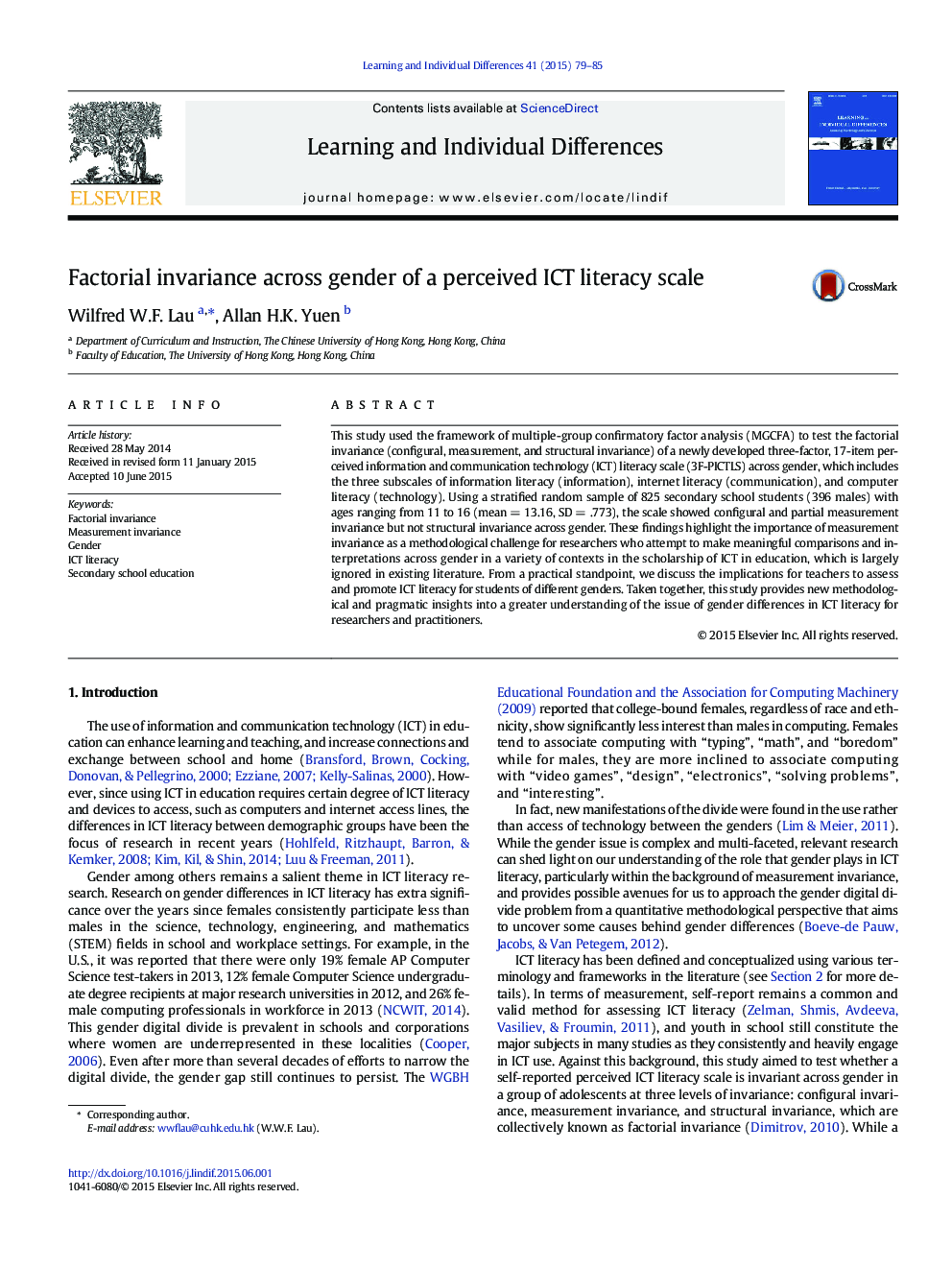| Article ID | Journal | Published Year | Pages | File Type |
|---|---|---|---|---|
| 364684 | Learning and Individual Differences | 2015 | 7 Pages |
•The factorial invariance across gender of a perceived ICT literacy scale was examined.•The scale showed configural and partial measurement invariance across gender.•However, there was no evidence for structural invariance across gender.•It is important to establish measurement invariance before making cross-group comparisons.•We discuss the implications of the findings for researchers and practitioners.
This study used the framework of multiple-group confirmatory factor analysis (MGCFA) to test the factorial invariance (configural, measurement, and structural invariance) of a newly developed three-factor, 17-item perceived information and communication technology (ICT) literacy scale (3F-PICTLS) across gender, which includes the three subscales of information literacy (information), internet literacy (communication), and computer literacy (technology). Using a stratified random sample of 825 secondary school students (396 males) with ages ranging from 11 to 16 (mean = 13.16, SD = .773), the scale showed configural and partial measurement invariance but not structural invariance across gender. These findings highlight the importance of measurement invariance as a methodological challenge for researchers who attempt to make meaningful comparisons and interpretations across gender in a variety of contexts in the scholarship of ICT in education, which is largely ignored in existing literature. From a practical standpoint, we discuss the implications for teachers to assess and promote ICT literacy for students of different genders. Taken together, this study provides new methodological and pragmatic insights into a greater understanding of the issue of gender differences in ICT literacy for researchers and practitioners.
